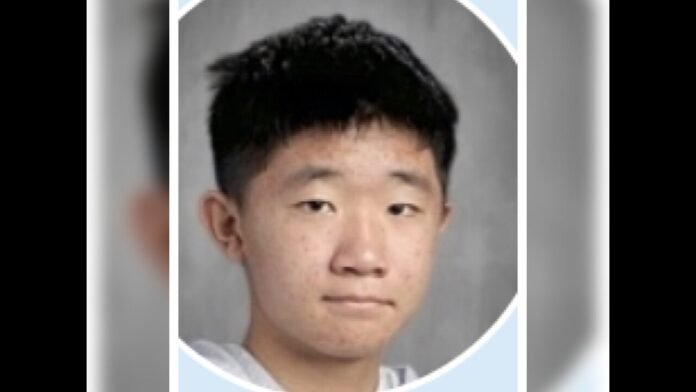For basketball athletes, an Anterior Cruciate Ligament (ACL) tear can change everything ending seasons, disrupting careers, and requiring months of painful recovery. It’s one of the most dreaded injuries in sports medicine, known for its long rehabilitation time and the psychological toll it takes on athletes. For Ben Zhang, it was more than just an injury. After undergoing surgery and a grueling rehabilitation process himself, Ben transformed that challenge into motivation to help others facing the same struggle.
Through the YRI Fellowship, Ben designed a novel AI-assisted research project aimed at predicting ACL injury risk and recovery time. His project represents the rare combination of personal experience, scientific rigor, and technological innovation. Instead of viewing his injury as a setback, Ben reframed it as an opportunity to apply artificial intelligence to a problem that impacts athletes worldwide.
Working with machine learning models such as Random Forest and Gradient Boosting, Ben paired computational techniques with traditional data analysis tools including Python, pivot tables, and Google Sheets. By carefully processing and analyzing data, he was able to uncover critical factors influencing both injury occurrence and rehabilitation outcomes.
His findings were eye-opening and grounded in evidence:
- Risk factors increasing ACL injuries: Height, training intensity, and female athletes’ higher vulnerability.
- Protective factors reducing risk: Adequate rest days.
- Recovery time factors: Longer recovery associated with age and height, while speed and jump height correlated with shorter recovery.
- Rehabilitation insight: Physiotherapy proved to be the most effective recovery program.
These insights not only confirm some long-standing observations in sports science but also shed light on overlooked predictors, particularly the importance of structured rest in reducing injury risk.
“Instead of letting my injury hold me back, I wanted to create research that could make a real difference,” Ben explained. “YRI gave me the mentorship and platform to turn my story into science.” His statement reflects the Fellowship’s emphasis on empowering students to merge personal passion with scientific innovation.
Among the models tested, Ben’s Random Forest model outperformed others, highlighting “Rest Days per Week” as one of the most critical predictors for preventing injuries. This finding reinforces what many coaches emphasize but few quantify: recovery is as essential as training. For athletes eager to push their limits, Ben’s model serves as a scientific reminder that overtraining can be just as dangerous as undertraining.
The significance of Ben’s work extends beyond personal achievement. His research has been submitted to IEEE Transactions on Biomedical Engineering, one of the leading journals in the field, which underscores the academic rigor of his methods. By providing a reproducible framework for clinicians, sports scientists, and athletes, his work can serve as a foundation for developing AI-driven injury prevention tools in the future. Imagine a mobile app for athletes that uses simple inputs like training load, rest days, and jump height to generate personalized injury risk assessments a vision made more realistic thanks to Ben’s framework.
Equally important are the rehabilitation insights his project generated. While ACL recovery is often guided by standard timelines, Ben’s analysis revealed that age, height, speed, and jump height all correlate with recovery duration. This suggests a more personalized approach to rehabilitation may be possible, tailoring recovery programs to an athlete’s unique profile. His confirmation that physiotherapy remains the most effective recovery pathway also strengthens the evidence base for structured rehabilitation over alternative approaches.
Ben’s project also highlights a key theme in modern research: the fusion of personal narrative and scientific discovery. What began as a painful injury became the inspiration for a project with global impact. By drawing directly from his lived experience, Ben was able to ask questions that many researchers without firsthand exposure might overlook. His work embodies the principle that the best science often begins with personal curiosity and urgency.
Most importantly, Ben’s journey highlights what makes the YRI Fellowship so powerful: giving students the chance to transform personal challenges into innovations with global impact. The Fellowship doesn’t just provide access to tools and mentors it cultivates an environment where setbacks are reimagined as opportunities, and where even high school students are empowered to contribute meaningfully to academic and clinical research.
Sports injuries remain a major global issue, affecting millions of athletes at both amateur and professional levels. For basketball, soccer, and other high-intensity sports, ACL tears are particularly common and devastating. Ben’s project offers a path toward not only predicting and preventing these injuries but also tailoring recovery programs in a way that maximizes both physical and psychological resilience.
As his research continues to develop, the broader vision is clear: AI-powered frameworks could one day help athletes everywhere train smarter, recover faster, and avoid preventable injuries. For Ben, what started as a personal roadblock has become a scientific contribution with the potential to improve the lives of countless athletes.
Learn more about how the YRI Fellowship empowers students like Ben to turn obstacles into breakthroughs at yriscience.com.


